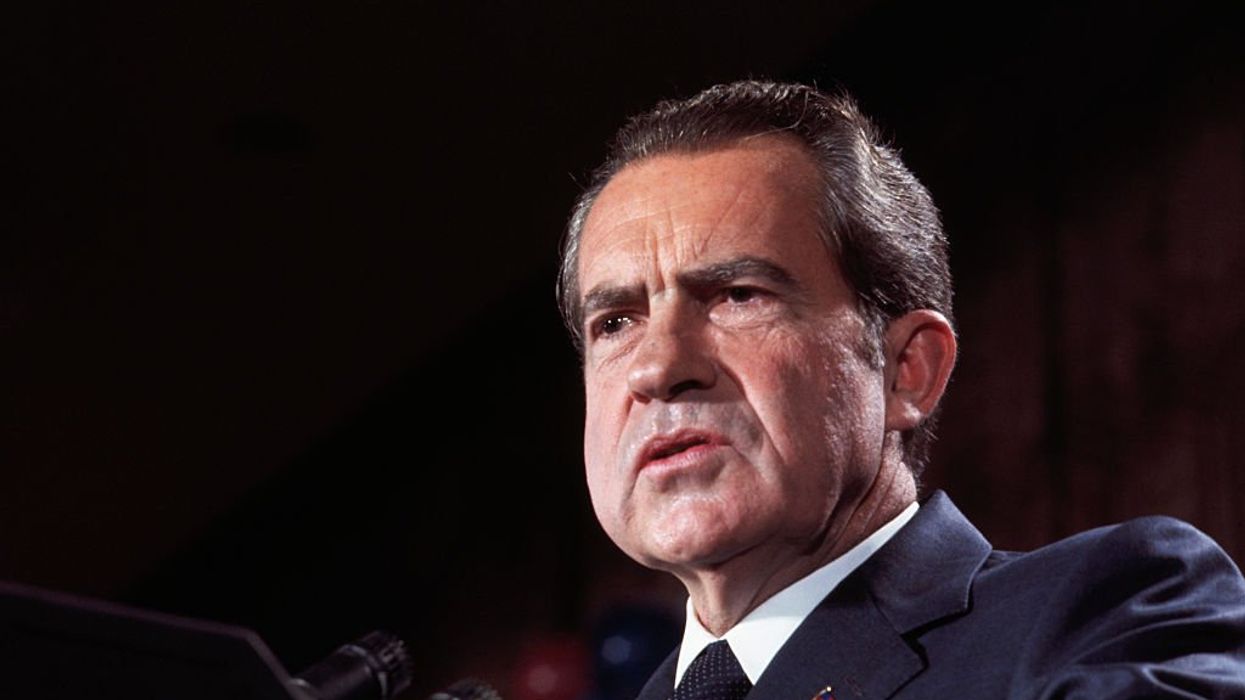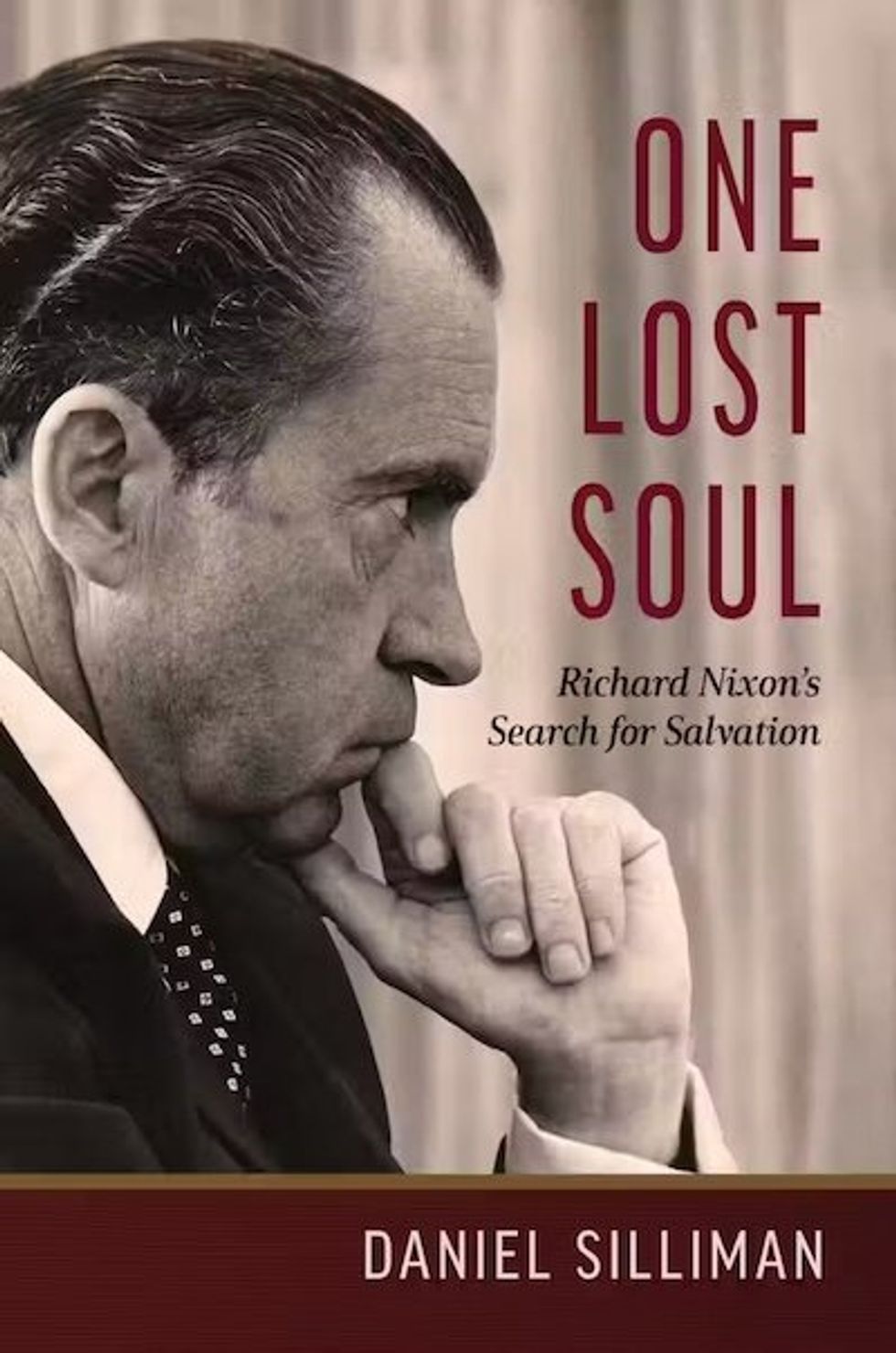
Bettman/Getty Images
The author of a new biography on the religious struggles that haunted the scandal-ridden president.
Mention Richard Nixon and what first comes to mind is his Machiavellian cunning. Here is a man for whom power — acquiring it, maintaining it, and wielding it against his enemies — came first, right up until his brutal downfall.
But there was another, equally powerful force driving America's 37th president: his conflicted yet sincere Christian faith. Far from being a one-dimensional political animal, Nixon was a man deeply entangled in a lifelong struggle with God.
People don't think Nixon was religious. And he's not if you think ‘religion’ means ‘moral,’ ‘pious,’ or ‘loves to go to church.’
This struggle, as Daniel Silliman’s new biography, "One Lost Soul: Richard Nixon's Search for Salvation," reveals, shaped his actions and haunted his conscience until his final days.

Silliman, an editor at Christianity Today, carefully peels back the layers of Nixon’s public persona to expose the spiritual tensions beneath.
Nixon’s quest for divine guidance, according to Silliman, was not a peripheral aspect of his life but central to his personal drama. This internal conflict, often overshadowed by his public scandals, is crucial to understanding the tragic dimensions of his story.
Even on the eve of his resignation, Nixon sought solace in prayer, overwhelmed by the weight of his sorrow and the collapse of his career. But as Silliman points out, Nixon's glance toward heaven wasn’t a desperate, last-minute attempt at redemption. It wasn’t some cheap Hail Mary.
On the contrary, it was a practice ingrained in him from his earliest days.
Nixon’s religious journey began with his Quaker upbringing. Raised in a household that emphasized simplicity, integrity, and self-discipline, these values laid the foundation for his early worldview.
However, his relationship with these ideals was far from straightforward. His father, a stern man, and his devout mother instilled in him a sense of duty and moral rigor that would shape his complex relationship with faith.
His marriage to Thelma Catherine “Pat” Ryan, raised Methodist, further rooted him in a faith that offered both support and stress. Nixon’s associations with two influential religious figures — Billy Graham and Norman Vincent Peale — would later play pivotal roles in shaping not just his personal struggles but also his political decisions and moral outlook.
Graham, the famous Baptist evangelist, was perhaps the most significant religious influence in Nixon’s life. Their friendship, which began in the early 1950s, was a powerful intersection of faith and politics.
Graham, with his mission to bring Christianity to the masses, embodied a form of religious authenticity and moral authority that Nixon deeply admired. However, at the same time, Graham’s unwavering commitment to moral purity often clashed with Nixon’s political pragmatism. Unsurprisingly, this created a tension that highlighted the disparity between Graham’s rigid ideals and Nixon’s actions.
Norman Vincent Peale, a Presbyterian minister famous for his "power of positive thinking," offered Nixon a different kind of religious guidance. Peale’s teachings, which emphasized optimism and self-belief, resonated with Nixon’s ambitious nature. Moreover, in addition to providing him with a psychological framework, they also offered a roadmap for navigating the treacherous terrain of U.S. politics.
Peale’s philosophy was less about repentance and salvation and more about overcoming adversity through the sheer force of positivity. It was more Tony Robbins than Thomas Aquinas. This approach offered Nixon a “better” way to maintain his public image and manage the compounding pressures of his career.
However, Peale’s teachings also presented a paradox of sorts for Nixon. The contrast between Peale’s optimism and Nixon’s personal experiences of failure and moral compromise created a deep internal conflict.
While the power of positive thinking helped Nixon project a resilient public persona, it often clashed with the reality of his darker impulses and the ethical ambiguities that defined his political career.
According to Silliman, none of this makes sense without reference to Nixon's spiritual battles. As he told Align, “People don't think Nixon was religious. And he's not if you think ‘religion’ means ‘moral,’ ‘pious,’ or ‘loves to go to church.’ But he's very religious if you think one of the things that means is someone struggling with God.”
“Nixon,” he added, “wrestled with the core Christian idea of God's grace his entire life. I argue that struggle is essential to who he was, and in the book, I show how it explains his great successes and his tragic humiliation.”
In Silliman's view, Nixon's inner, existential struggle with God is the key to understanding the man in full — and inseparable from his specific place in American history. By seeing Nixon in the context of America's mid-20th-century religious currents — most notably, the rise of Cold War Christianity and the impact of evangelical literature — Silliman presents a compellingly nuanced portrait of a complicated figure.
Like all of us, Nixon was far from flawless. Yet, the portrayal of him as a calculating villain fails to capture the full scope of his true character. Yes, his transgressions served his political ambition, but what did that ambition serve?
Silliman ventures an explanation. "I am not a crook," Nixon famously protested. Whether or not he truly believed this, Silliman suggests, he never managed to shake a deeper guilt: the guilt of a hopeless sinner in desperate need of redemption.
John Mac Ghlionn
Contributor